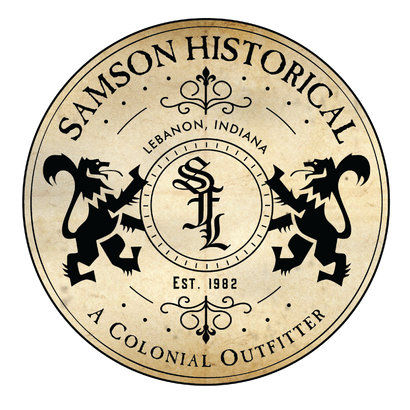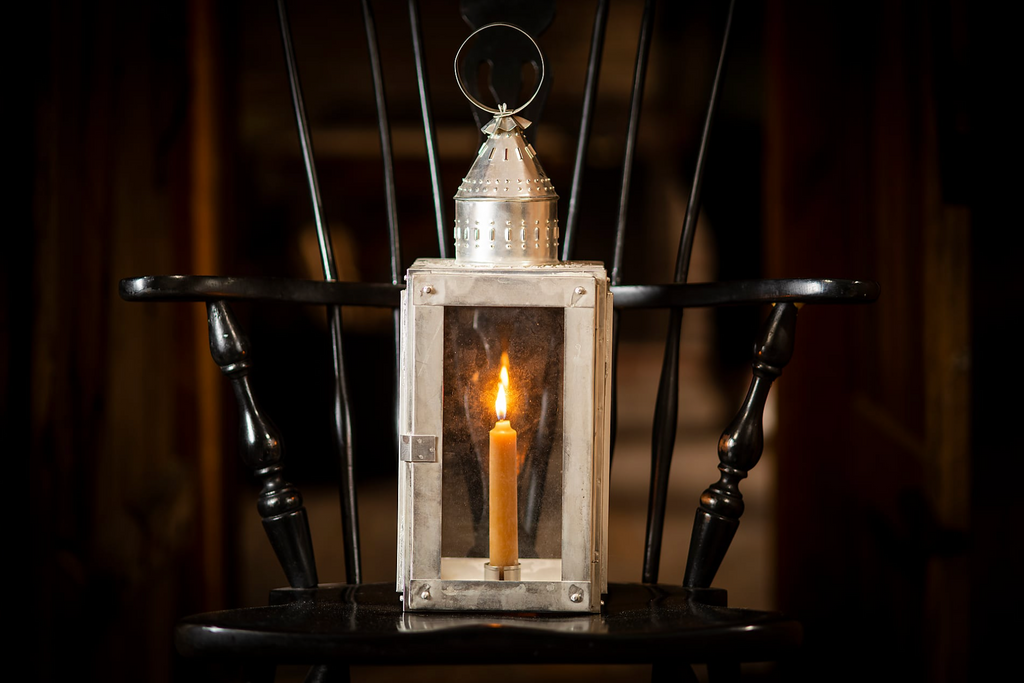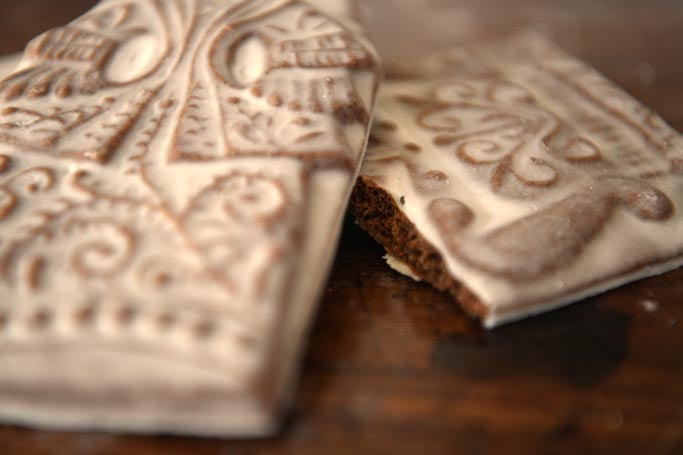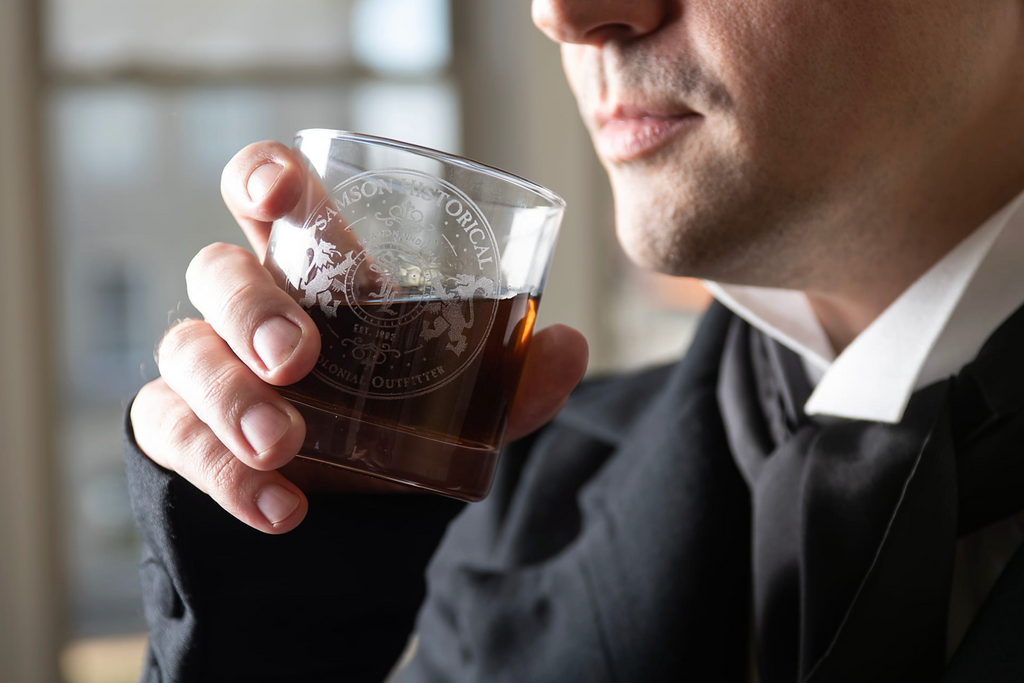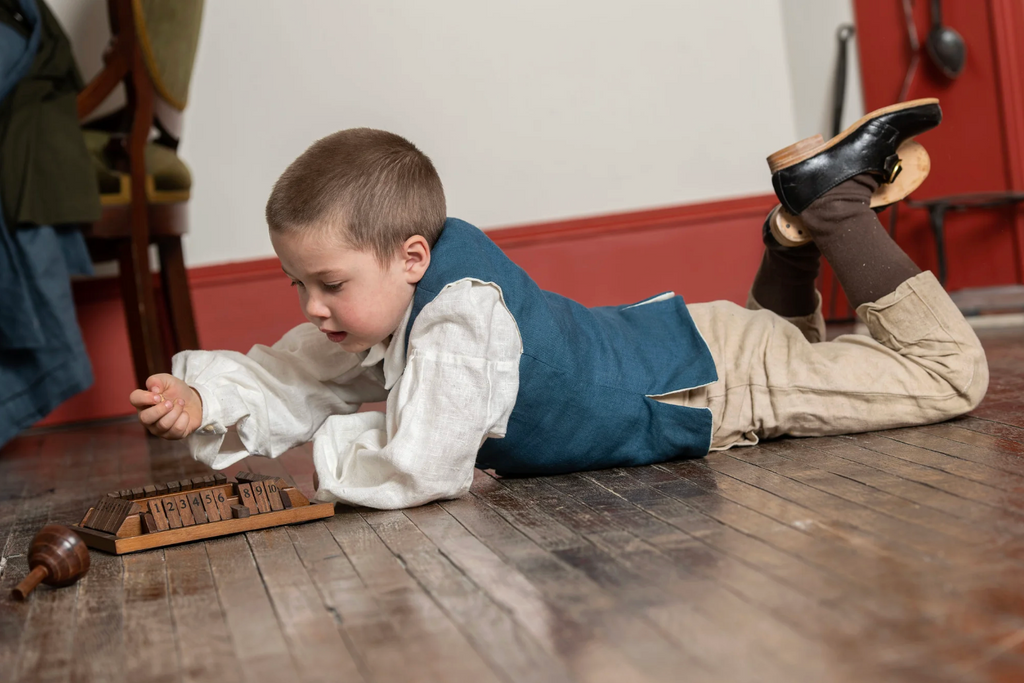Men’s Clothing
Women’s Clothing
Children's Clothing
John Adams' Defense of Eight British Soldiers Involved In The Boston Massacre
by Hannah McIntire 13 min read

By: Rachel Basinger
If I asked you when the first battle of the American Revolution occurred, you’d likely mention the Boston Massacre, picturing British soldiers firing indiscriminately into a crowd of innocent colonists. What you might not know is that Paul Revere, who is more commonly known for his “midnight ride” or career as a silversmith, actually popularized this picture as a kind of propaganda against the British influence in the colonies.
While many cite the Boston Massacre as the first event of the American Revolution, the United States actually owes more to the trials of the British captain and soldiers involved in the putative bloody massacres of October and December 1770.
In 1767, Parliament enacted a collection of laws that would later become known as the Townshend Acts, which imposed duties on glass, lead, paper, tea, and other products. This was an effort to recoup losses from the Seven Years’ War fought against France. Since they were detached from the European community, colonists in America were loath to pay the duties, and in the summer of 1768, Boston importers refused to pay the customs dues.
As a result, the royal governor of Massachusetts Francis Bernard petitioned assistance from the crown in restoring order and respect for British law. In October 1768, two regiments of British soldiers -- the 14th and the 29th Regiments -- arrived in Boston to ensure that the taxes were collected. The population of Boston rapidly grew with the arrival of the roughly 4,000 British soldiers.
During the late 1700s, Boston was a hotbed of radical, revolutionary activity. Due largely in part to Samuel Adams’ efforts, the colonists of Boston began to resist and resent England’s influence on the colonies, as exemplified by the taxes without their consent. With the arrival of troops, the composition of the community radically changed, as “one man in three was a soldier,” and tensions between the colonists and the British soldiers and loyalists began to rise .
The anger peaked in late February 1770 when a British sympathizer fired onto an angry crowd of protesters after a protestor struck his wife, killing 11-year-old Christopher Seider. Four days later, an enormous funeral for Seider -- likely encouraged by Samuel Adams -- drew nearly 2,000 mourners, or one-seventh of Boston’s population.
The colonists who called themselves patriots found new resolve to not let themselves be bullied by the British. Such a volatile environment in Boston meant that even a small disagreement between an American patriot and a British loyalist or soldier could turn fractious quickly.
The Bloody Massacre
On the cold, icy morning of March 5, 1770, just after 9 o’clock on King Street, a single British soldier, Private Hugh White, guarded the sentry outside the Boston Custom House. A passing remark turned into a contentious affair. White overheard a Bostonian wigmaker’s apprentice mention that Captain John Goldfinch had not paid a bill to the local wigmaker -- later it was discovered that he had paid -- and stood up for the British officer, saying he was a gentleman and would pay. Edward Garrick, the apprentice, retorted that there were no gentlemen left in the regiment. Private White and Garrick briefly exchanged words before White hit Garrick with the butt of his musket, causing Garrick to fall to the ground.
This commotion drew the attention from passersby, and a small crowd of roughly 50 men and boys came over to taunt White, who retreated to the steps of the Custom House. White suddenly found himself surrounded by an assembly of Boston colonists. Then, from far away, church bells began to ring, trying to draw people to the crowd at the customs house, and people poured into the streets. The insignificant group of boys and men had turned into a substantial crowd of 300 to 400 people.
The officer for the day, Captain Thomas Preston, paced back and forth in the Main Guard for 30 minutes, trying to decide if he should order additional soldiers to turn out to aid White if needed. Eventually, he decided yes, so seven British soldiers from the 29th Regiment -- a corporal and six other privates -- came to join White with fixed bayonets on their muskets accompanied by their captain with a drawn sword.

The crowd continued to taunt the British soldiers, calling them “lobsters” and “bloody backs,” and hurling chunks of ice, oyster shells, snowballs, sticks, and stones. Evidence suggests that one of the soldiers, likely Hugh Montgomery, was pushed to the ground and received a club to the head. It appears that, in response to getting hit, Montgomery opened fire on the crowd and encouraged the other soldiers to follow suit, although it is unclear if it was closer to 30 seconds later or two minutes later. Three men were killed instantly, and two died of wounds later. In addition, six more were wounded.
The event, which lasted less than an hour, claimed five victims: Crispus Attucks, James Caldwell, Patrick Carr, Samuel Gray, and Samuel Maverick. Crispus Attucks was a free sailor of African and Native American descent and later was seen as the first martyr of the American Revolution.
The crowd declaimed the event as foul but dispersed when the Acting Governor Thomas Hutchinson promised an inquiry and urged the crowd to calm down: “Let the law have its course. I will live and die by the law.” Within two days, the eight soldiers and their captain, Thomas Preston -- along with four civilians -- were arrested and charged with murder. Although sworn depositions were received soon after what would come to be known as the “bloody massacre,” Hutchinson postponed the trials until later in the year to allow tensions to cool down.
There are more than 200 eyewitness accounts for this event that would become a symbol of the American war for independence, and they vary widely. The colonists, however, did not want the British to retaliate, so they agreed to a fair trial. Originally, three trials were scheduled -- one for Captain Preston who was tried separately as an officer and a gentleman, one for the soldiers, and one for the customs officers who supposedly shot from the windows -- but the evidence for the latter was found to be fallacious and quickly dropped.
Captain Preston submitted a letter to the Boston Gazette on March 12, 1770, early on in his imprisonment, which lasted seven months. He thanked the Bostonians for choosing a fair trial and justice over mob rule: “Permit me thro’ the Channel of your Paper to return my Thanks in the most Publick Manner to all the Inhabitants in general of this Town -- who, throwing aside all Party and Prejudice, have with the utmost Humanity and Freedom, stept forth Advocates for Truth, in defence of my injured Innocence, in the late unhappy Affair that happened on Monday Night last: And to assure them, that I shall ever have the highest Sense of the Justice they have done me, which will be ever gratefully remembered by their much obliged and most obedient humble servant, Thomas Preston.” While some of the colonists, predominantly the patriots, may have abjured the right to a fair trial for the British, Preston definitely understood the foundation the colonists were establishing and honored them for it.
A later letter written in the summer that Preston had sent to London expressed frustration that the colonists seemed to be trying to conjure up any lie in order to convict the British soldiers and himself. When this ended up in the paper in June 1770, it surely did not have the same reception as the first letter he penned.
The British troops were recalled from Boston, but the damage had already been done. Boston, as a whole, and patriots like Samuel Adams in particular, had never liked the British troops, but the event on March 5, 1770 intensified anti-British sentiment, as can be seen in Paul Revere’s picture. Many lawyers were loath to represent the British, as they knew they would be risking their careers, but John Adams, then a young lawyer of 35, agreed to defend the Redcoats. Even though Hutchinson wisely waited more than six months until the trials, tensions were still high, as the two trials, Rex v. Preston and Rex v. Wemms et al., began in late fall 1770.
The Trial of Captain Preston
The trial of Captain Thomas Preston ran from October 24 to October 29, 1770 -- quite long for a criminal trial in the colonial world. In addition, the jury were sequestered from family and friends, another unusual occurrence in the 1700s. John Adams was joined by Josiah Quincy and Robert Auchmuty to defend Preston against the charge of murder. Even though Preston had only drawn a sword, he was charged with murder because he was the officer in charge and responsible for the men under him.
Because English legal custom prohibited defendants from defending themselves in criminal cases based on the supposition that they would perjure themselves, Preston -- and later his soldiers at their trial -- did not testify at the trial itself.
In his eyewitness account, Preston insisted that he did not order the men to fire and instead told them to stop firing and to hold their fire. After the case went to jury at 5 p.m. October 29, they reached a decision three hours later but did not announce the decision until October 30. Preston was found not guilty because it could not be proven that he had given the order to fire. No transcript of Preston’s trial survives -- if there was one even made -- although there are three extant personal accounts of the trial from three different observers.
Although defending Preston was challenging in its own right, Adams faced an even more insurmountable task as he prepared for his defense of the eight soldiers a month later. The trial of the soldiers ran from November 27, 1770, until a decision was reached on December 5. As in the case of Rex v. Preston, such a lengthy duration was unusual for a trial at this time.
The Trial of the Eight Soldiers
Faced with the task of defending the accused soldiers -- Corporal William Wemms, James Hartigan, William McCauley, Hugh White, Matthew Kilroy, William Warren, John Carol, and Hugh Montgomery -- Adams was joined again by Josiah Quincy and a new lawyer, Sampson Blowers. Similar to the trial of Captain Preston, the jury was sequestered, and there was not a single Boston resident on the jury.
During the trial, 80 witnesses testified, and John Adams gave a rousing defense -- although this is seen more from hindsight. Because the trial of Preston had found that the captain had not given the order to fire, Adams, Quincy, and Blowers had a more challenging task. They had to prove that the soldiers were acting out of self-defense in order for the eight men to be acquitted.
Adams began his closing speech with a quote by Marchese di Beccaria, an Italian penologist: “If, by supporting the rights of mankind, and of invincible truth, I shall contribute to save from the agonies of death one unfortunate victim of tyranny, or of ignorance, equally fatal, his blessings and years of transport will be sufficient consolation to me for the contempt of all mankind.” In other words, Adams indicated that he believed it was essential to protect innocence. Even if he as a lawyer suffered because of it and even if a guilty man (or men) went free, Adams felt it was better to have protected an innocent man or innocent men.
Adams found through a close examination of the facts and statements of witnesses that the soldiers were not at fault. If anyone was to blame, it was the British government that stationed the troops in Boston, not the soldiers themselves. Moreover, the tragedy came from the colonial mob. The colonists were upset that the British government had sent troops to Boston to keep the peace and then compelled the colonists to provide spaces to quarter the troops. Adams and the other founding fathers surely had the Boston Massacre in mind as they drafted the Third Amendment to the Constitution: “No Soldier shall, in time of peace be quartered in any house, without the consent of the Owner, nor in time of war, but in a manner to be prescribed by law.”
Adams then moved on to the issue at hand: the firing of the weapons. He stressed that the soldiers were acting in self-defense. They were mistrusted, so Adams queried the jury, asking how the soldiers could be expected to remain stoic? In this way, Adams emphasized the responsibility of the crowd. It was evident from witness accounts that the crowd had taunted the soldiers with nasty names and pelted them with all sorts of missiles. According to Adams, the soldiers only resorted to firing in an effort to defend themselves. In particular, Adams noted that one man -- Private Montgomery -- had been knocked down. In that case, of course, he would want and need to defend himself.
Through his speech, Adams stressed that the evidence of all the witnesses was not sufficient to convict any of the eight soldiers of murder. Even if the case of the two who were supposed to have been proved to have killed, the evidence demanded that the charge be reduced to manslaughter since there had not been “malice aforethought.”
In the midst of this eloquent speech, John Adams delivered one of his now famous quotations: “Facts are stubborn things, and whatever may be our wishes, our inclinations, or the dictums of our passions, they cannot alter the state of facts and evidence.” As someone sympathetic to the patriot cause, Adams acknowledged that the wishes of a patriot might be for the British soldiers to suffer, but he believed that the facts indicated that the eight soldiers were innocent.
The trial of the soldiers was unique in that it accepted hearsay evidence, as one of the five victims -- Patrick Carr -- testified on his deathbed that he believed the soldiers were acting in self-defense. In the 1700s, it was customary to believe that words spoken on one’s deathbed were truthful, so his physician was allowed to speak on the deceased Carr’s behalf.
Like Rex v. Preston, the jury deliberated for several hours -- two and a half in the case of the soldiers -- and decided to acquit six of the soldiers. It found two of the soldiers -- Hugh Montgomery and the soldier originally stationed at the sentry, Hugh White -- guilty of manslaughter, which was a lesser charge than murder. As in the case of Captain Preston, it was essential to prove “malice aforethought” in order for any of the eight defendants to be charged with murder.
Both Montgomery and White opted for the benefit of the clergy, which allowed first-time offenders to have an “M” branded on the part of the hand nearest the thumb instead of imprisonment. It ensured that everyone would know that they had been found guilty if they ever took an oath in court again.

According to the jury, sufficient evidence had shown that Montgomery and White had definitely fired their weapons, but there was not enough evidence to prove which of the other soldiers had or had not fired. In the case of at least one man -- Montgomery -- it seemed that the jury was correct, as he later told his lawyer that he had been the one to yell “Fire!” after getting hit by a stick thrown by a member of the crowd.
After the decision of the jury, there were a variety of angry responses in the newspapers, and the Boston Gazette in particular railed against John Adams. In addition, Adams said later that he lost half of his practice due to his defense of the British captain and soldiers, and it is clear from less biased sources that Adams’s practice definitely did suffer . But the venom remained words only, as there were no riots after the October and December trials.

The Importance of the Dec 1770 Trials
The December 1770 trial of the eight British soldiers of the 29th Regiment in which John Adams gave a rousing defense of protecting innocence should be even more iconic of life during the winter months in the American colonies.
The December 1770 trial has a deep significance to our legal system today and is a testament of the colonial legal system. Through the trials of the hated British redcoats even amidst a city that largely believed Paul Revere’s inaccurate picture, Boston and the Massachusetts Bay Colony showed that it desired the colonies to be a nation of laws, rather than of arbitrary power. Even if that meant that the extremely disliked British troops received a fair trial and even in a town where mob rule had seized the day on March 5, it did not have to seize the day on December 5.
In addition, the December 1770 trial established the custom of innocent until proven guilty. As John Adams stated, “(I)t’s of more importance to the community that innocence should be protected than it is that guilt should be punished.” Adams led the way as the lawyer who willingly defended the unpopular side, asserting that no unfortunate individuals should die due to tyranny, and he was willing to risk the contempt of his fellow patriots and his law practice to live by this value.
Moreover, the December 1770 trial upheld self-defense, a canon in the law of nature, and was the first time the phrase “reasonable doubt” was used. Many courtroom and legal procedures, customs, and values we take for granted in the modern world have a basis in or are affirmed in John Adams’ defense of the British redcoats.

Adams affirmed the importance of the law over emotion throughout his defense: “The law, in all vicissitudes of government, fluctuations of the passions, or flights of enthusiasm, will preserve a steady, undeviating course; it will not bend to the uncertain wishes, imaginations and wanton tempers of men.” In other words, it was essential to hold maintaining the law above human beings because that is the only way that anyone would receive a fair trial.
On the third anniversary of the Boston Massacre -- March 5, 1773 -- before the infamous Boston Tea Party in December 1773, Adams reflected on his decision to accept the responsibility of defending the British soldiers and the risk that he, along with his family, faced: “I devoted myself to endless labor and Anxiety if not to infamy and death, and that for nothing, except, what was indeed was and ought to be in all, a sense of duty. In the Evening expressed to Mrs. Adams all my Apprehensions: the excellent Lady, who has always encouraged me, burst into a flood of Tears, but said she was very sensible of all the Danger to her and to our Children as well as to me, but she thought I had done as I ought, she was very willing to share in all that was to come and place her trust in Providence.” Just like John, Abigail believed firmly that the right thing to do was to defend the British soldiers in a fair trial, even if the Adams family suffered as a result.
While Adams was glad to serve his town (and later country) in this way of defending the right to a fair trial, he did not take specific pride in the fact that he was the one to do it. In fact, he suggested that any man should have done it due to a sense of duty and that “(j)]udgment of Death against those Soldiers would have been as foul a Stain upon this Country as the Executions of the Quakers or Witches, anciently. As the Evidence was, the Verdict of the Jury was exactly right”.
In sum, the December 1770 trial was an important test in the rule of law. Certainly, the Boston Massacre itself is much more memorable and invoked the patriotic feelings and desire to overthrow British rule that we associate with the American war for independence. However, the December 1770 trial of the British captain and soldiers involved in the Boston Massacre established that America was going to be a nation of laws, of innocence until proven guilty, and of the right to self-defense, no matter how liked or hated the defendant was. Everyone was going to be equal before the law.
After December 1770 and the conclusion of the two trials, Boston was relatively calm until the Tea Act of 1773 that prompted the Boston Tea Party of December 16, 1773. Adams reflected fondly on his decision to defend the British captain and soldiers:
"It was one of the most gallant, generous, manly and disinterested actions of my whole life, and one of the best pieces of service I ever rendered to my country."
Leave a comment
Subscribe
Sign up to get the latest on sales, new releases and more …
